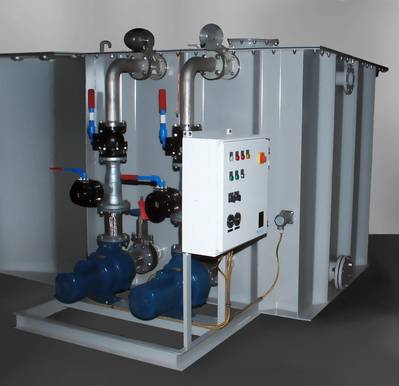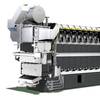A new method for dealing with accumulated sewage sludge on vessels and offshore platforms.
Scienco/FAST has introduced a new way to deal with sludge with its standard MarineFAST Marine Sanitation Device, meeting MEPC.159(55) or providing secondary treatment incorporates about one month of internal sludge storage or three months with larger systems. For vessels requiring a longer period, the MarineFAST BMS provides an aerobic sludge digester with long term internal storage to extend the sludge storage.
Operation is completely automatic and hands-free, and the sludge is enclosed in tanks and piping – no need for personnel to come into contact with sewage or sewage sludge.
According to the manufacturer, MarineFAST BMS reduces sludge volume by 65% compared with other systems. No strainers, filters, membranes or centrifuges are required. Vents are used to weather through the FAST unit; no separate vent piping required. The system does not affect the dimensions, weights or operation of the FAST unit.
The MarineFAST BMS system uses an aerobic process with no corrosion or odor from septic sewage or sewage sludge. Tanks are designed to ABS deep tank standards, protection against corrosion is exceptional and all machinery, piping and controls meet USCG requirements for inspected vessels. When settled, the activated sludge exhibits about 4% concentration in water.
At the same time, the more complex biota within the MarineFAST media tank includes higher ordered organisms that predate upon simpler life forms, effectively removing up to one-third of the mass and volume of the stored sludge. Conservatively speaking, properly settled sludge from the FAST process will produce about 3% / 4% X 66% = 50% of the volume of sludge to be expected from a suspended growth process, the manufacturer said.
This digestion and dewatering provides another 30% reduction so that the amount of sludge produced by a FAST unit and MarineFAST BMS working together is about 50% X 70% = 35% that of a conventional system, a 65% reduction. Also, the FAST sewage treatment system will continuously reprocess excess water returned from the BMS system and will discharge the treated effluent overboard to get the maximum possible reduction in mass and volume.
sciencofast.com

















